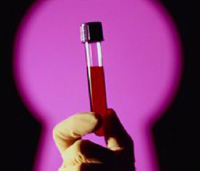A Brief History of Anti-Doping
Early years of doping
The word doping is probably derived from the Dutch word dop, the name of an alcoholic beverage made of grape skins used by Zulu warriors in order to enhance their prowess in battle. The term became current around the turn of the 20th century, originally referring to illegal drugging of racehorses. The practice of enhancing performance through foreign substances or other artificial means, however, is as old as competitive sport itself.
Ancient Greek athletes are known to have used special diets and stimulating potions to fortify themselves. Strychnine, caffeine, cocaine, and alcohol were often used by cyclists and other endurance athletes in the 19th century. Thomas Hicks ran to victory in the Olympic marathon of 1904 in Saint Louis with the help of raw egg, injections of strychnine, and doses of brandy administered to him during the race! By the 1920s it had become evident that restrictions regarding drug use in sports were necessary.
 First attempts
First attempts
In 1928 the International Amateur Athletic Federation (IAAF) became the first International Sport Federation (IF) to ban the use of doping (use of stimulating substances). Many other IFs followed suit, but restrictions remained ineffective as no tests were performed. Meanwhile the problem was made worse by synthetic hormones, invented in the 1930s and in growing use for doping purposes since the 1950s. The death of Danish cyclist Knud Enemark Jensen during competition at the Olympic Games in Rome 1960 (the autopsy revealed traces of amphetamine) increased the pressure for sports authorities to introduce drug tests.
In 1966 UCI (cycling) and FIFA (football) were among the first IFs to introduce doping tests in their respective World Championships. In the next year the International Olympic Committee (IOC) instituted its Medical Commission and set up its first list of prohibited substances. Drug tests were first introduced at the Olympic Winter Games in Grenoble and at the Olympic Games in Mexico in 1968. In the year before, the urgency of anti-doping work had been highlighted by another tragic death, that of cyclist Tom Simpson during the Tour de France.
Tests begin to work
Most IFs introduced drug testing by the 1970s. The use of anabolic steroids was becoming widespread, however, especially in strength events, as there was no way of detecting them yet. A reliable test method was finally introduced in 1974 and the IOC added anabolic steroids to its list of prohibited substances in 1976. This resulted in a marked increase in the number of drugs disqualifications in the late 1970s, notably in strength-related sports such as throwing events and weightlifting.
Anti-doping work was complicated in the 1970s and 1980s by suspicions of state-sponsored doping practiced in some countries. As regards the former German Democratic Republic, these doubts have been substantiated. The most famous doping case of the 1980s concerned Ben Johnson, the 100-metre champion who tested positive for stanozolol (anabolic steroid) at the Olympic Games in Seoul, 1988. Johnson's case focused the world's attention to the doping problem to an unprecedented degree. There is an evident connection between more effective test methods and a remarkable drop in the level of top results in some sports in the 1990s.
New challenges
While the fight against stimulants and steroids was producing results, the main front in the anti-doping war was rapidly shifting to blood doping. "Blood boosting," removal and subsequent re-infusion of the athlete's blood in order to increase the level of oxygen-carrying haemoglobin, has been practiced since the 1970s. The IOC banned blood doping as a method in 1986.
Other ways of increasing the level of haemoglobin were being tried, however. One of these was erythropoietin (EPO). EPO was included in the IOC's list of prohibited substances in 1990, however the fight against EPO was long hampered by the lack of a reliable testing method. An EPO detection test, based on a combination of blood and urine analysis, was first implemented at the Sydney Olympic Games in 2000.
United efforts
In 1998 a large number of prohibited medical substances were found by police in a raid during the Tour de France. The scandal led to a major reappraisal of the role of public authorities in anti-doping affairs. As early as 1963, France had been the first country to enact anti-doping legislation. Other countries followed suit, but international cooperation in anti-doping affairs was long restricted to the Council of Europe. In the 1980s there was a marked increase in cooperation between international sports authorities and various governmental agencies. Before 1998 debate was still taking place in several discrete forums (IOC, Sports Federations, individual governments), resulting in differing definitions, policies, and sanctions. One result of this confusion was that doping sanctions were often disputed and sometimes overruled in civil courts.
The Tour de France scandal highlighted the need for an independent international agency, which would set unified standards for anti-doping work and coordinate the efforts of sports organizations and public authorities. The IOC took the initiative and convened the World Conference on Doping in Sport in Lausanne in February 1999. Following the proposal of the Conference, the World Anti-Doping Agency (WADA) was established on 10 November 1999. WADA is structured on the basis of equal representation of the Olympic Movement and Public Authorities. In 2001 WADA's Fondation Board voted to move its headquarters from Lausanne to Montreal. The Montreal headquarters were inaugurated in April 2002.
點(diǎn)擊查看更多奧運(yùn)百科